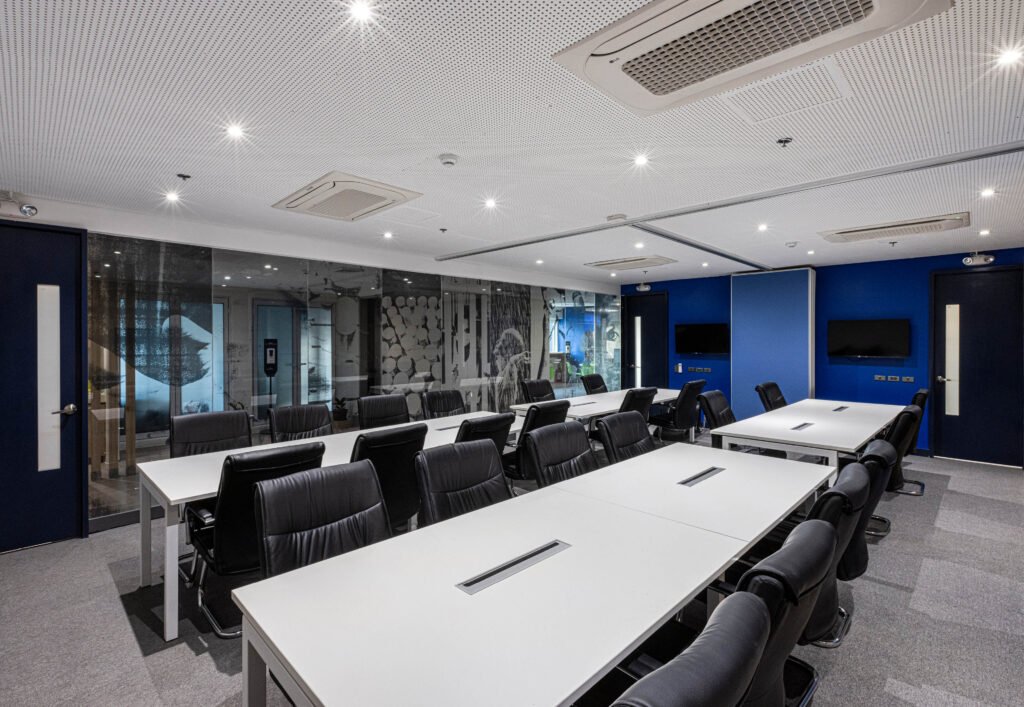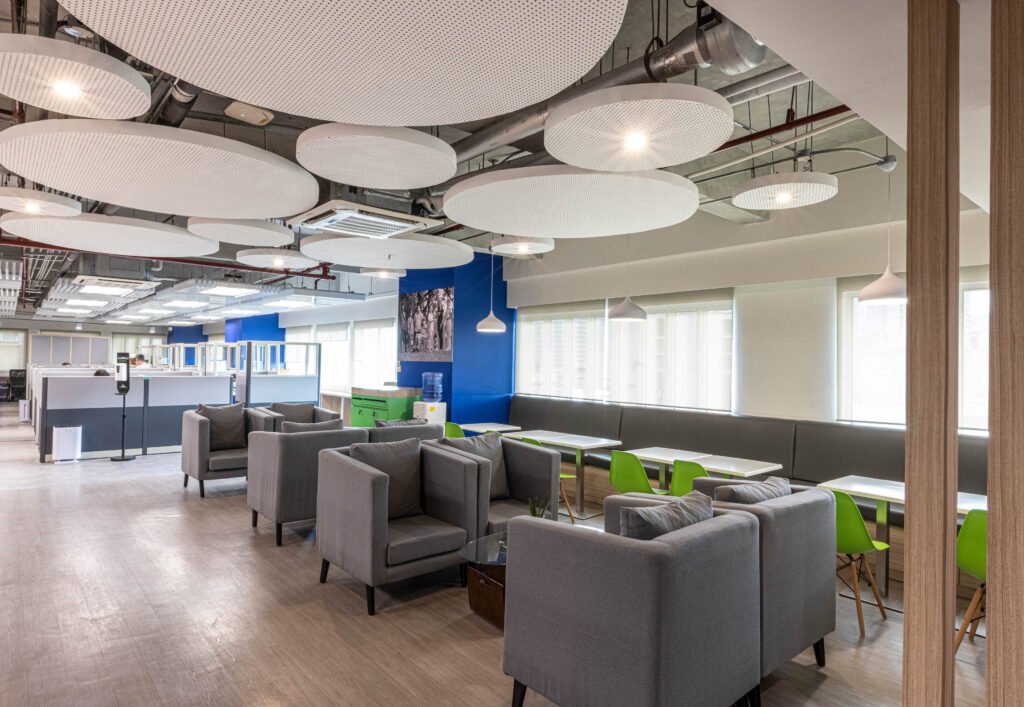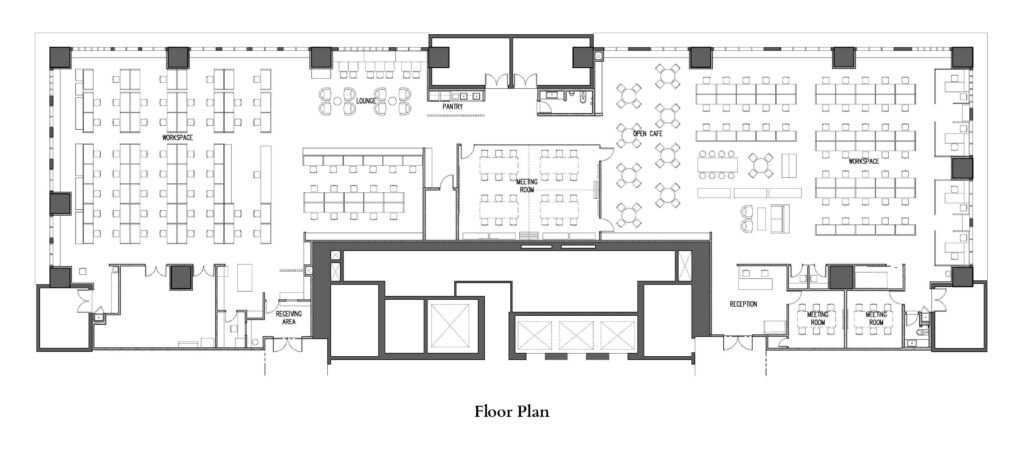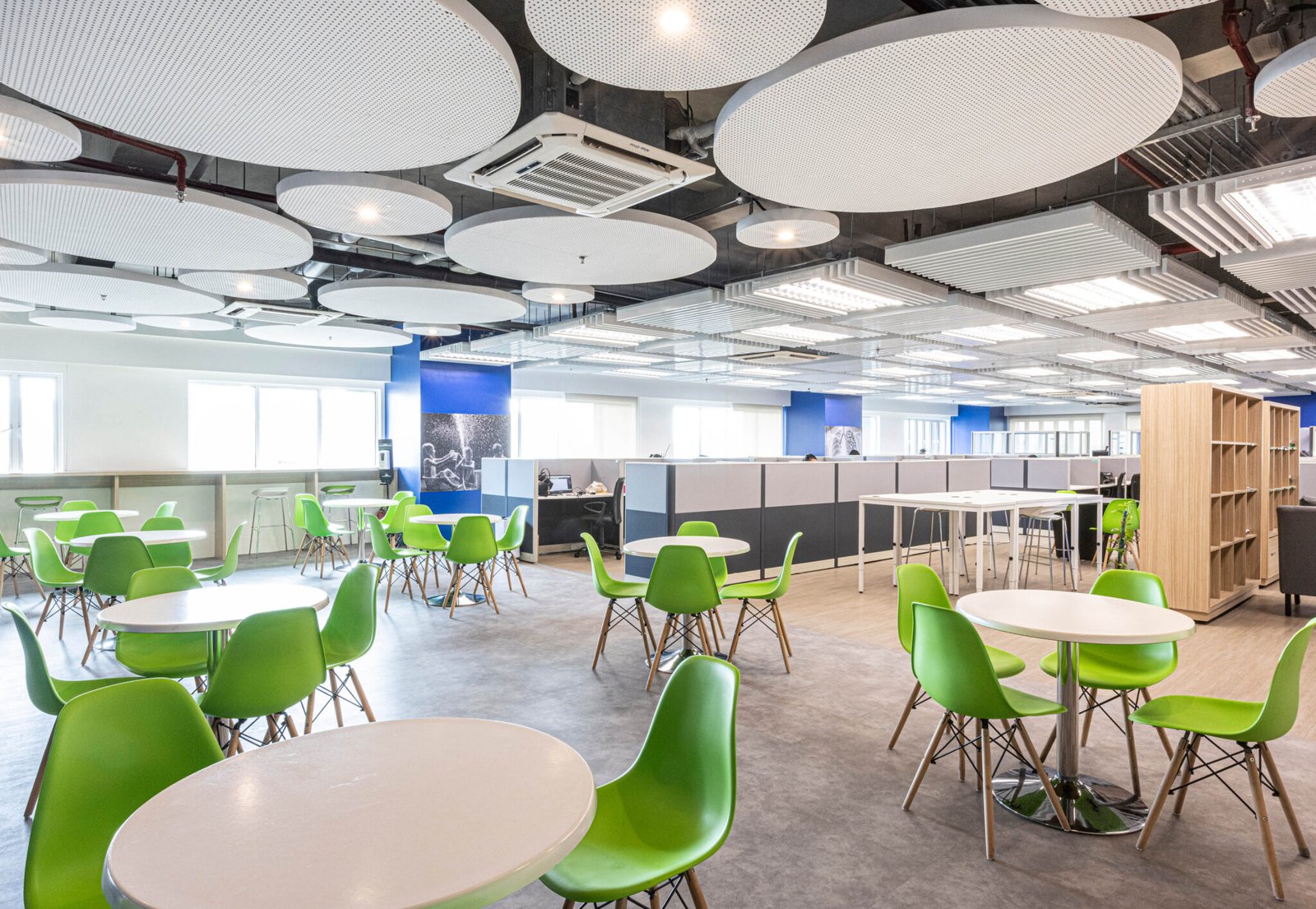Words Patrick Kasingsing
Images Jar Concengco
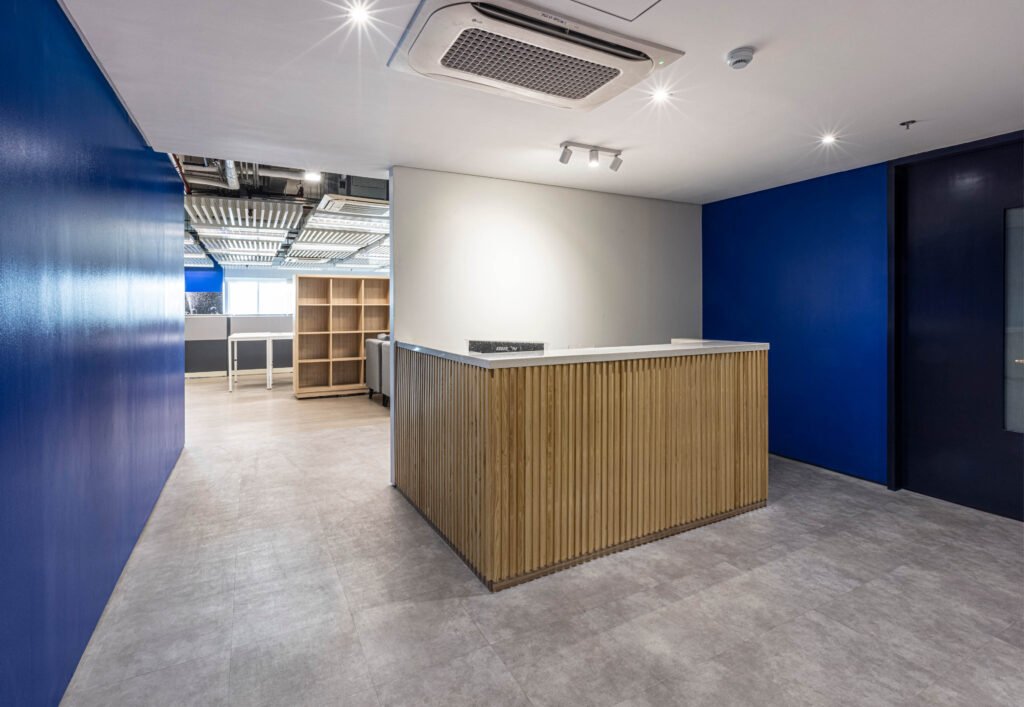

Office Roles
The pandemic has tested our relationship with offices as we know it. While articles and think pieces on the inefficiencies of the prevailing office model have been coming thick and fast even before COVID-19, it was when everyone was forced to work from home that got employers and employees alike pondering the role offices play in productivity and performance.
Two years in, it has been quite a journey of discovery for both parties. Different sectors came to different conclusions; ad agencies like Mullenlowe TREYNA, for example, went all-in on a hybrid setup, reconfiguring their office into a social hub more than a place for grind. International companies like Airbnb have even gone as far as to make WFH a permanent option for its employees. But the work offsite model, predictably, is not always practical or compatible, especially for businesses and organizations that require frequent travel, face-to-face meetings, and centralized coordination. Such is the case of 51-year-old nonprofit and non-government organization Philippine Business for Social Progress (PBSP). Established in 1970, they have since been involved in social development work throughout the archipelago, using grants and donations for projects with a focus on the health, education, environment, and livelihood sectors.


Future Forward Vision
In a time like no other, PBSP forged ahead with its long-gestating plan to move to a new, bigger workplace in time for its 50th year in 2020. This was a time when pandemic restrictions were at their most stringent, and both government and private companies were still figuring out the rules by which to navigate this unfamiliar situation. “I think for a lot of organizations, whether they are businesses or non-profits like PBSP…at some point, you just need to accept the fact that you have to live with the pandemic and you cannot let it derail or slow you down. That’s where we were,” PBSP’s executive director Elvin Uy shared with architect Timothy Wong of Polygon, in his interview about the office project.
Conversations regarding a move bubbled since 2014; PBSP’s Intramuros home base was showing its age and there was an opportunity to relocate to a more strategic outpost in Mandaluyong that can house 200 out of the 800-strong personnel that comprises the organization. It was an investment in the company’s future: “You don’t necessarily build for today; You also build for what you think the organization will be in 3, 5, 10 years…” Uy shares. And for a company whose crux for existence is the assured future of the country, it pays to look the part to attract funding to keep programs up and running. Wong adds with regards to their understanding of the client brief: “As we learned, their new office was a practical decision and not a luxury. With an organization of their scale, a central hub is essential to manage its 800-member team. They desired a space that is representative of their ideals, where they can build relationships externally, and a home that provides the team a sense of belongingness.”
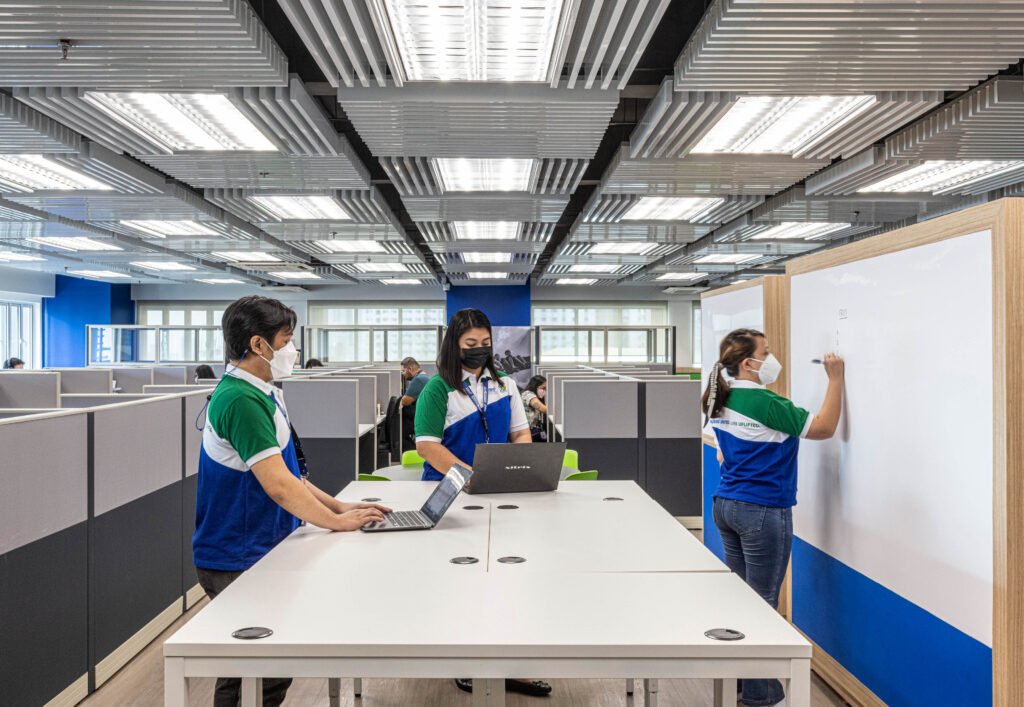

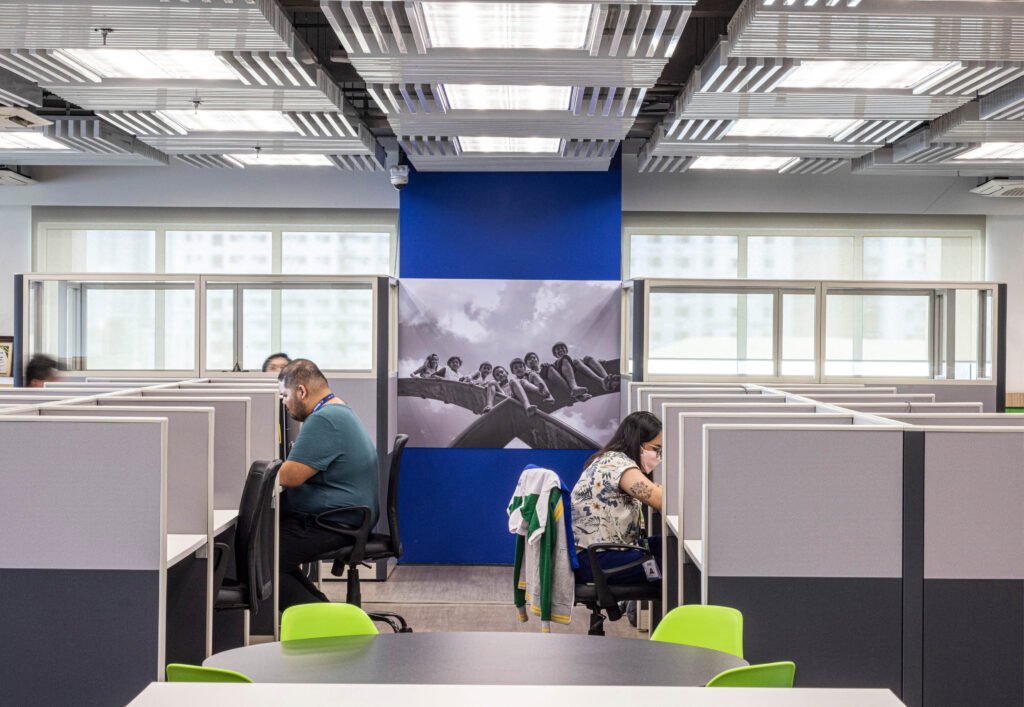

A Slight Hitch
Plans for the move were eventually solidified in 2019, with Polygon chosen as the project designer. However, to add to the challenge of transplanting a large, half-century-old organization from its long-time perch, the pandemic landed with a dull thud. There was a need to regroup and take stock of how to meet the situation: “The main concern was whether we can stay on time, on budget, and on specification.” Uy says of their quandary. “Since the project is already funded, there was a lot of responsibility in handling the resources needed to make it happen,” Wong adds. However, the show must go on, and while mostly prohibitive, the pandemic offered the construction team opportunities to execute the work with fewer disruptions. The work-from-home order effectively freed up the organization’s new 1,200-sqm space in Mandaluyong for uninterrupted construction work. The designs and plans were all easily disseminated digitally, with regular Zoom calls between shareholders ensuring everyone was on the same page.


The Workplan
Polygon’s Wong summed up their work process for the office: “To mitigate the process, the work was done in two phases: the first phase involved moving their core team which needed a smaller area, and the second phase was moving the larger project team. The strategy allowed both the organization and the project team to implement the plan gradually while being able to make improvements along the way. All the while, the PBSP management team ensured the rest of the staff were updated, which allowed them to be part of the process too, making it easier for the team to adapt.”
At the forefront of each step in this work plan is the health and safety of all collaborators; as we’ve seen in the pandemic, one negligent mistake can lead to an outbreak. “Our strategy in planning was to identify fixed and flexible programs. And since we worked in phases, we also identified which parts worked or needed improvement.” Wong explains.
A New Face for a New Space
It is important to the Polygon team that while pandemic considerations need to be integrated into the design, they should not be a constraint to the space’s life post-pandemic. It should also be a space that embodies all that PBSP stands for and be a spatial ambassador to everyone it shelters.
To ensure that this cookiecutter office space gets a distinct flavor, Wong and his team immersed themselves in PBSP’s work, learning about their “interactions, daily duties, and what made employees proud to be part of PBSP.” The team then set out to translate these insights into physical form. The brand’s signature colors: azure and lime, are used as wall accents and zoning cues. Wood textures bring warmth to the space and come in the form of tile laminates, cabinetry, ceiling, and wall treatments. Bold photography-driven graphics adorn walls and conference room glass dividers, giving visitors a visual glimpse of PBSP’s work. Uniting these islands of spaces together (and addressing acoustical concerns in an open plan space) are ceiling treatments that alternate between weave-like slats above the work areas, and thought-bubble-like clusters above congregation hubs like the café area.
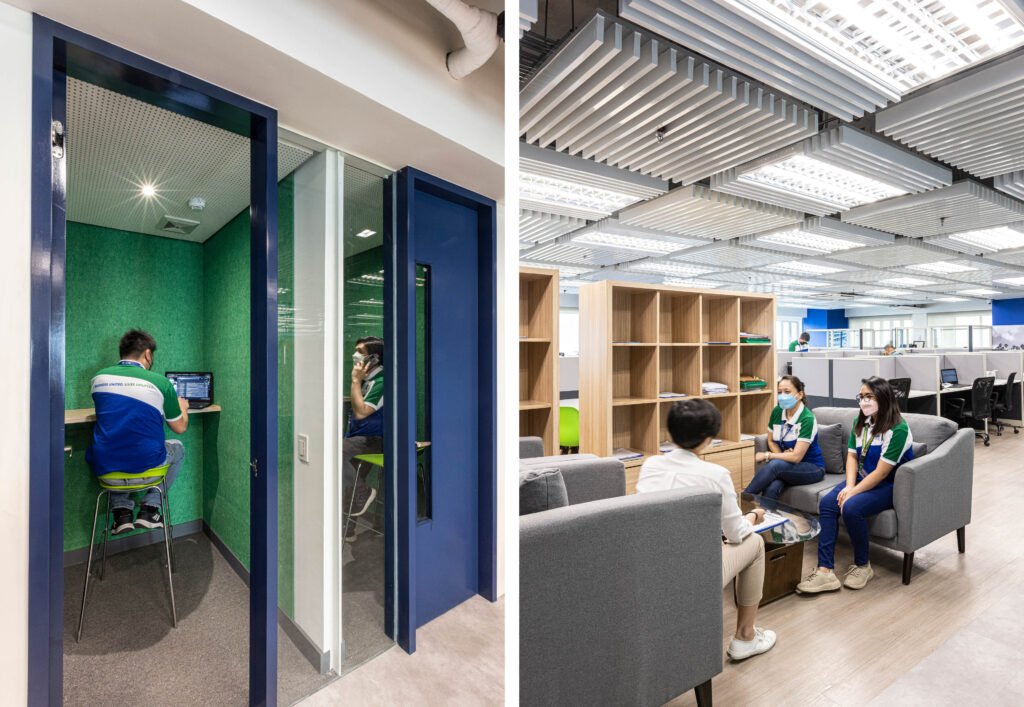

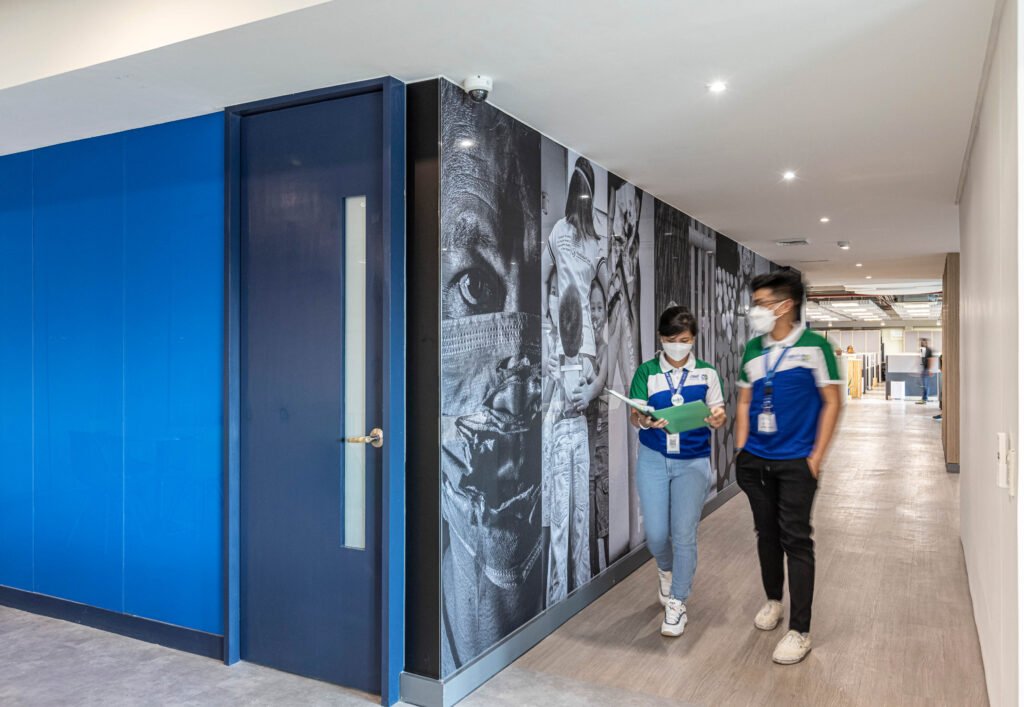

Beyond imbibing what PBSP currently is, the team also endeavored to know what the organization wanted to be; its large open plan layout incorporates pockets of interactivity amidst two huge work zones, a sort of permeable bubble where departments and sectors of the company that don’t necessarily work together can interact and germinate ideas. This enables new ways of interaction and ideation between the teams that weren’t explored in the previous office because of its limitations. There was finally a venue of information exchange that did not carry the limiting formalities of a board room, and with all the warmth and heart of a casual café.
Family Outside the Home
The pandemic has tested our relationship with offices as we know it. For the folks of PBSP, who moved into their new workplace last January 2022, it was a homecoming of sorts. “[Having an office is] not even so much about productivity now, but in having a sense of shared space and community.” Uy shared with Polygon. “Maybe it’s our way of expressing the Filipino concept of bayanihan…but we don’t treat our work as just that. It is a calling, an urge to better the lives of our fellow countrymen…the people we work with here, whom we hope to build strong and lasting relationships with, we see each other as family. It’s very difficult to forge and maintain such relationships when everything was remote, and especially when there were two different sites for our office.”
There is no question that in the case of PBSP, having an office was a necessity to carry their mandate for existence; theirs is a job that depends on face-to-face connection, and the presence of the human touch. No one-size-fits-all solution in workplace design post-pandemic exists, but what is clear is that offices must be willing to change if they are to survive. They must be unafraid to trim the fat and be more efficient in helping users deliver the work they are mandated to do, in a safe, healthy, and inspiring way.
Client feedback has been positive so far for the hardworking folks of Polygon, with Wong eager to see how the space they’ve crafted for the organization performs. “As the restrictions are slowly eased, we’re looking forward to seeing their space be filled with life. We are happy to have contributed to this new chapter in PBSP’s ongoing journey,” he shares. •
